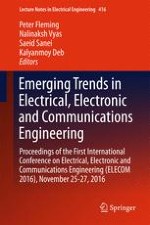2017 | OriginalPaper | Buchkapitel
Quantifying the Pumping Energy Loss Associated with Different Types of Leak in a Piping System
verfasst von : L. Latchoomun, D. Mawooa, Robert T. F. Ah King, K. Busawon, R. Binns
Erschienen in: Emerging Trends in Electrical, Electronic and Communications Engineering
Aktivieren Sie unsere intelligente Suche, um passende Fachinhalte oder Patente zu finden.
Wählen Sie Textabschnitte aus um mit Künstlicher Intelligenz passenden Patente zu finden. powered by
Markieren Sie Textabschnitte, um KI-gestützt weitere passende Inhalte zu finden. powered by
